Applications
Imaging changes in surface texture
Because UV light tends to be highly absorbed right at the surface of materials, one can see minute scratches that would normally be difficult or impossible to see with visible light. This is especially useful when the materials are transparent to visible light. The figure above shows two images of a scratched CD jewel case. The scratches are quite apparent in the UV image. The next figure shows two images of scratched varnish on a wooden drawer from an antique desk. The varnish is transparent to visible light, but less so in the UV band. Determining the presence or absence of scratches or other wear marks is useful for forensic analysis and authentication of antiques.
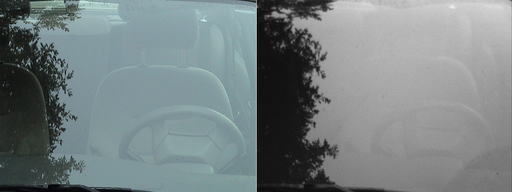
The windshields of modern automobiles are coated with UV-reflective coatings, reducing transmission.
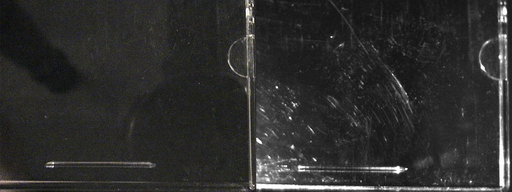
Scratched CD jewel case. Left-Visible, Right-UV
Scratches in clear plastic can difficult to see with visible light for two reasons. Because the material is transparent, the surface itself is hard to visualize, especially if it is very clean.
Furthermore, if the scratches are exceedingly fine or shallow, they may not reflect or scatter visible light to nearly the same extent as UV light. The UV image on the right shows a number of scrtaches not apparent in the color image.
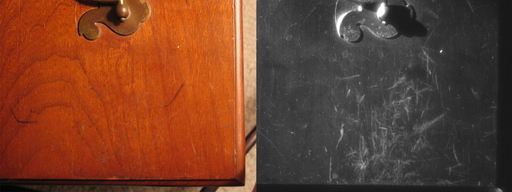
Scratches on wood varnish. Left-Visible, Right-UV
The varnish on this wooden drawer has numerous scratches which are very hard to see because the varnish is transparent to visible light. The UV image was made with 365nm illumination. At that wavelength, the varnish becomes quite absorbing, and the scratches scatter the incoming UV light, resulting in much higher contrast.
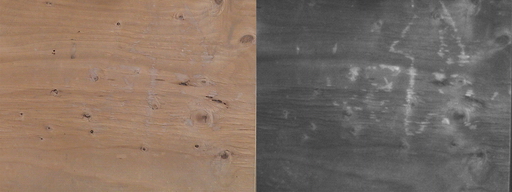
Many light-colored materials look darker in the UV. This is particularly true of organic materials. The dirt on this plywood is inorganic, and reflects UV more than the wood, creating enhanced contrast. UV imaging can be used to detect trace evidence in some situations.
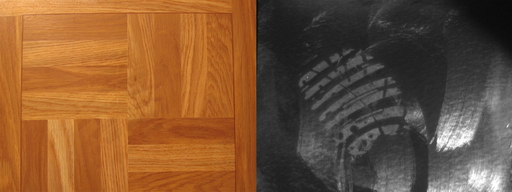
A shoe imprint on a waxed floor tile. Left-Visible, Right-UV
The surface texture of this freshly waxed vinyl floor tile is changed by the pressure of the shoe tread. The wax in the shoe impression becomes a diffuse reflector to raking UV illumination.
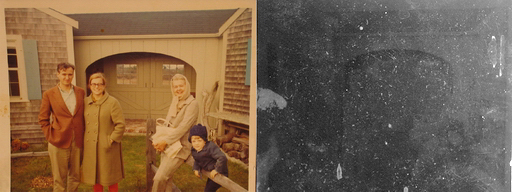
A photographic print from the 1970s. The UV absorbing clear coat has been scratched and stained in some places. Left-Visible, Right-UV
|


